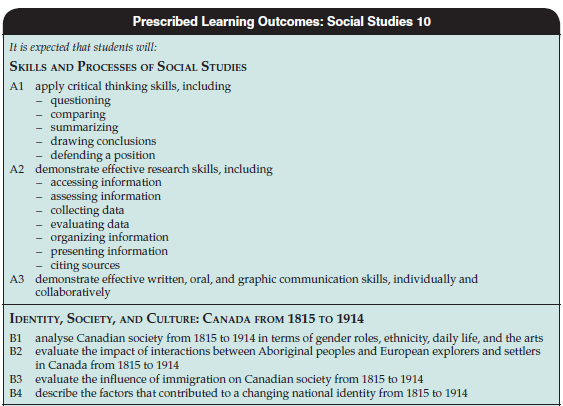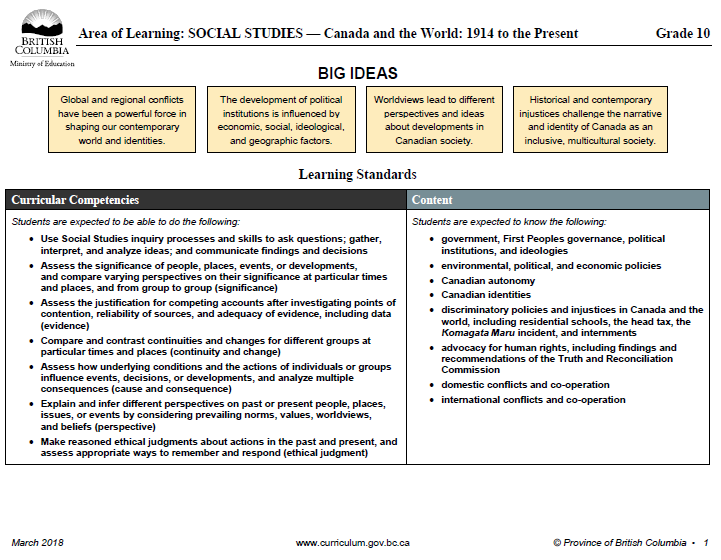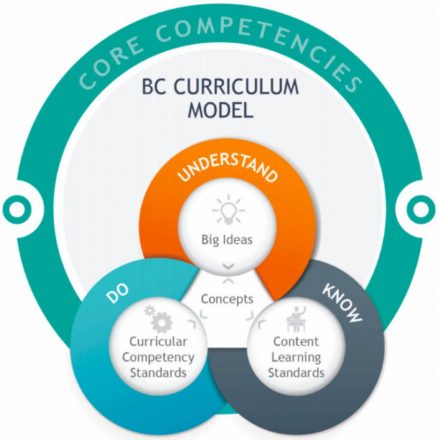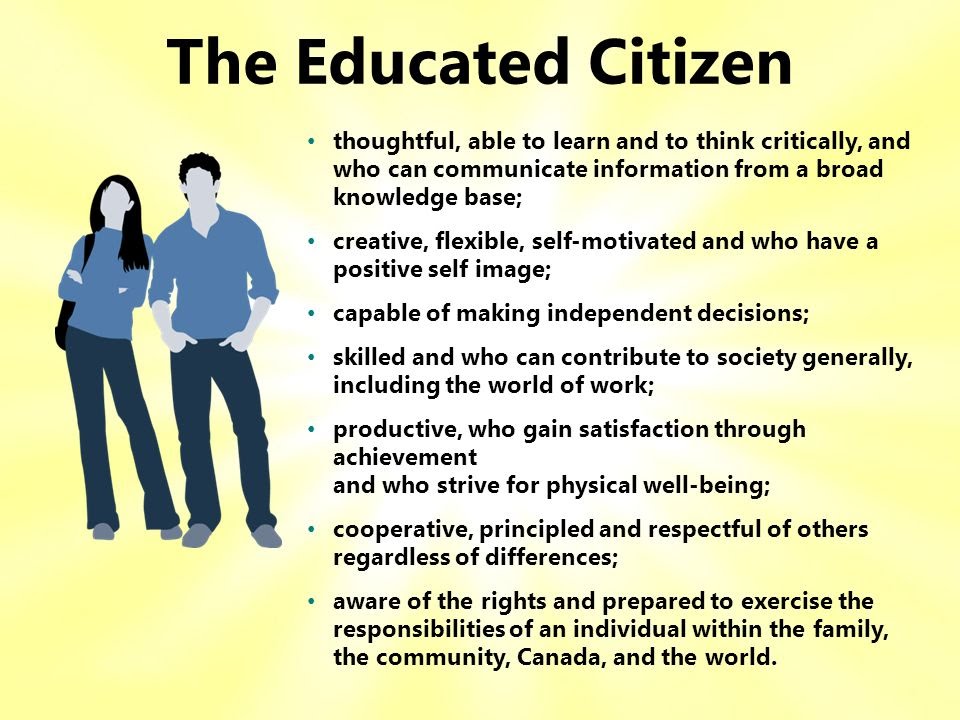Session 1: Setting the Table: Unpacking and Understanding the Competency-Based BC Curriculum
When the revised, competency-based BC curriculum launched at Secondary in 2017 for Grade 9 and 2018 for Grades 10-12, it marked a significant shift in how we traditionally viewed our teaching and learning process as Secondary educators. The old curriculum model was based around the Prescribed Learning Outcomes (PLOs) and similar to the new competency-based model, these prescribed learning outcomes focused on what students are expected to know and be able to do by the end of the course. That being said though, the structure of the PLOs put the focus on the required content standards for each course as opposed to the skills (competencies) they developed when learning the content.
Under the old model students relied upon their skills (competencies) to learn and acquire the content. The skills were the vehicle to get to the content. This model focused on memorization and comprehension with the goal of passing tests to demonstrate understanding. In competency based learning, the focus is placed on deep understanding that is demonstrated through application. This means that learning outcomes are proven by action, and focus on building the skills students need to become better learners into adulthood.
Example from 2006 Socials 10 curriculum: 
Students will apply critical thinking skills in order to analyse Canadian society from 1815 to 1914 in terms of gender roles, ethnicity, daily life, and the arts. (source)
Example from 2018 Socials 10 curriculum:
Under the new competency-based curriculum model, students use the content areas as the vehicle to develop their skills (competencies).
Students are expected to know about government, First Peoples governance, political institutions, and ideologies in order to assess the justification for competing accounts after investigating points of contention, reliability of sources, and adequacy of evidence, including data. (source)
Note, that the way we have written the above statement does not mirror the flow of the new curriculum document. This can be a confusing point for some as the older curriculum model was written in a way where the “curriculum directions” were more direct. However confusing this may be, this was done intentionally by the Ministry of Education to increase flexibility and personalization of the curriculum.
In order to better understand the flow of the revised curriculum, consider using a sentence template like this:
Students need to know (insert content area) in order to be able to (insert curriculum competency) and as a result they will understand (insert big idea).
Curriculum Model


https://www.youtube.com/watch?v=RTx_3zjjtvA
Key Ideas to Frame Our Thinking and Anchor us in the “Why”
- Education must be personalized because if we continue to focus on standardization, everything can be replaced by machines.
- We need to focus on asking the right questions, not just getting the right answers.
- We must focus on our emotional intelligence. Our brains are slowly being replaced by machines but machines will never replace our hearts.
- In the past, we achieved success by knowing the most, being the strongest / fastest / smartest, etc. Success was achieved quantifiably, by caring about oneself and might and muscle. In the future, we will achieve success qualifiably by using our wisdom and by caring for others.
- Learning from failure. Failure should be a spark for learning rather than the end of the learning. The only true failure is to give up, anything else is just a mistake.
- Students must be encouraged to be creative, constructive, innovative, and independent thinkers and learners. A culture of compliance won’t produce these attributes.
- The teacher as the lead, lifelong learner, can model and promote learning as a lifestyle that doesn’t cease when we leave the school.
- The relationship between student and teacher is more important than the relationship between teacher and subject area.
Dispelling Misconceptions
What about fairness? Being fair does not mean giving each student the same thing as everyone else. Instead, it means giving each student what they need to reach the same end goal.
Does personalized learning mean every student can do whatever they want? No. Personalized learning refers to offering different supports and pathways for a student to learn and show what they know.
What about prepping for post-secondary? Not all of our students are going to post-secondary. We want to support students to be avid and engaged, motivated learners. Whether they go to post-secondary or not, this is the skill that will support their long-term success regardless of their future path.
But you don’t get a chance to do a retest in real life! Actually you do. In almost every pathway, when you fail or make mistakes, the solution is usually to fix it and make it right rather than simply having the opportunity disappear.
If we give students unlimited attempts, then they won’t ever take the learning seriously. By working to make personal connections between the student and the learning and by knowing the student deeply and understanding who they are and what they value (and by that virtue, having them understand who you are and what you value), there is a much higher probability the student will be motivated to succeed based on the value and strength of this relationship alone.
In high school, we should be preparing our students for life in the real world. It is not our job to “prepare students for the real world” by attempting to mirror falsely-constructed and potentially damaging and unforgiving narratives about life after high school in a world where flexibility, caring, and personalization cease to exist. In very few scenarios does this false-narrative actually mirror real life.
High school may be a child’s last chance to feel connected to a learning community, to feel like they matter, and to be around adults who can model what engaged life-long learning can look like. This is such a critical opportunity and to lose this by attempting to “prepare” students for a version of reality that may not actually exist is doing a disservice to the student and the role of being a Secondary educator.
Why are these concepts so challenging?
These concepts challenge the framework and identity of what it has traditionally meant to be a Secondary school teacher. They require a much deeper level of personal reflection and willingness to re-evaluate the very essence of what we traditionally believed our jobs entailed. This is not simply pedagogical shift, it’s a personal shift that’s deeply connected to our core identities as educators.
Key Reading
Fishing for the Right Assessment Language by Myron Dueck
How I Broke My Rule and Learned to Give Retests by Myron Dueck
From Passenger to Copilot: Practical Ways to Assess with Our Students (Myron Dueck webinar)

